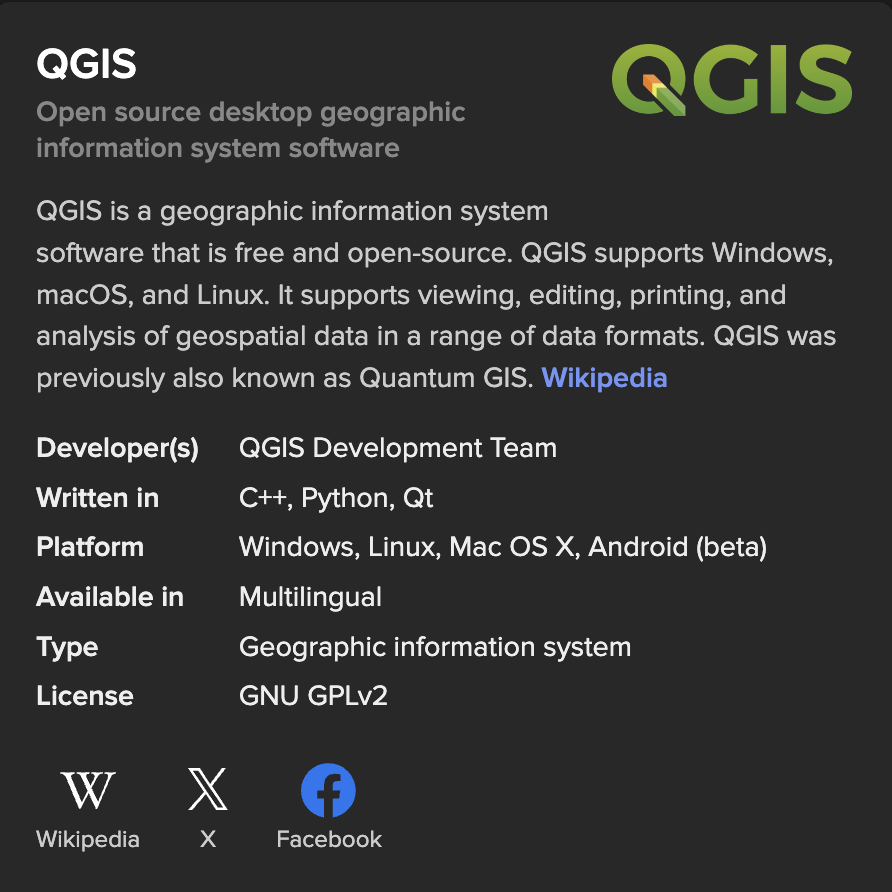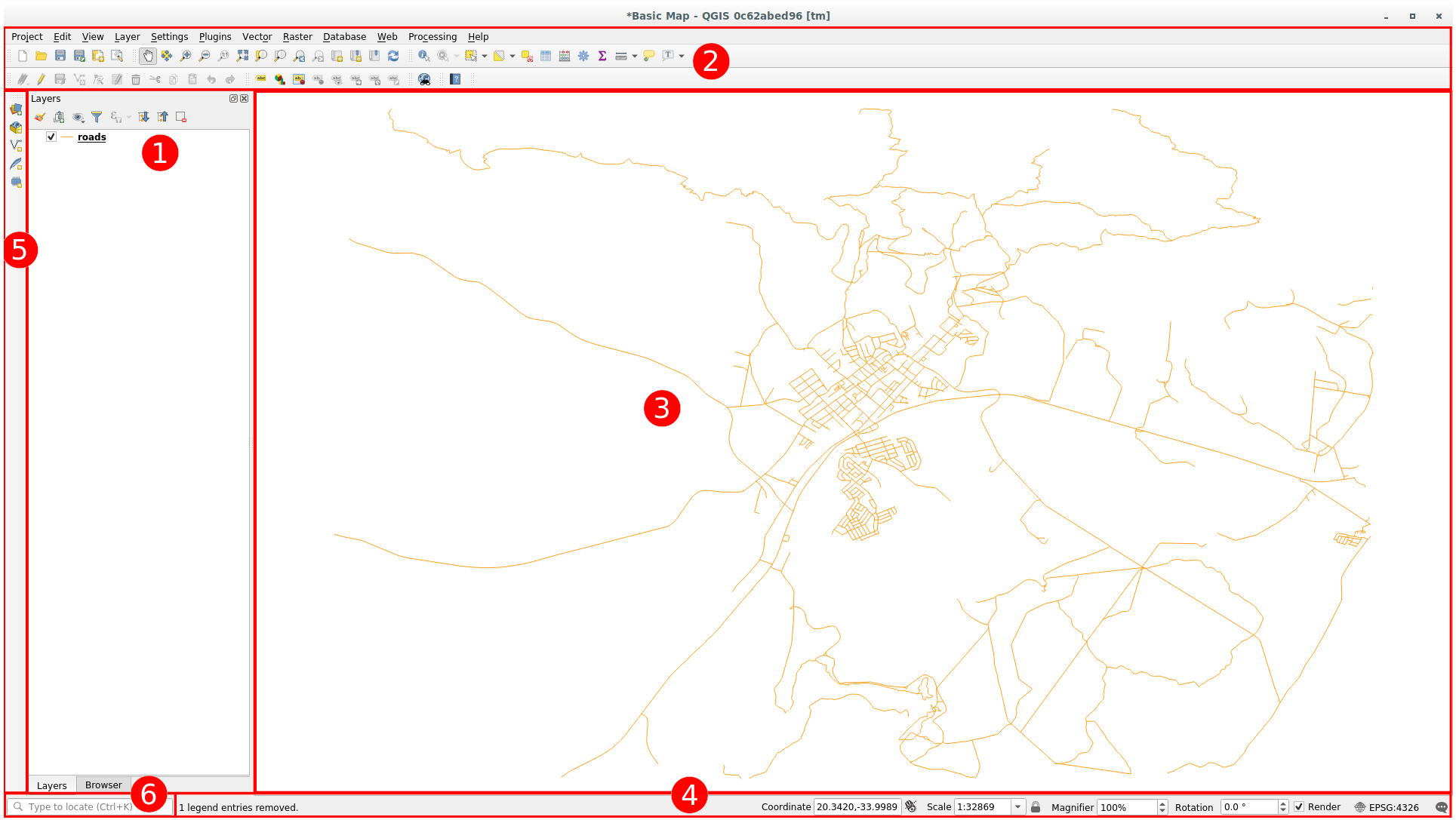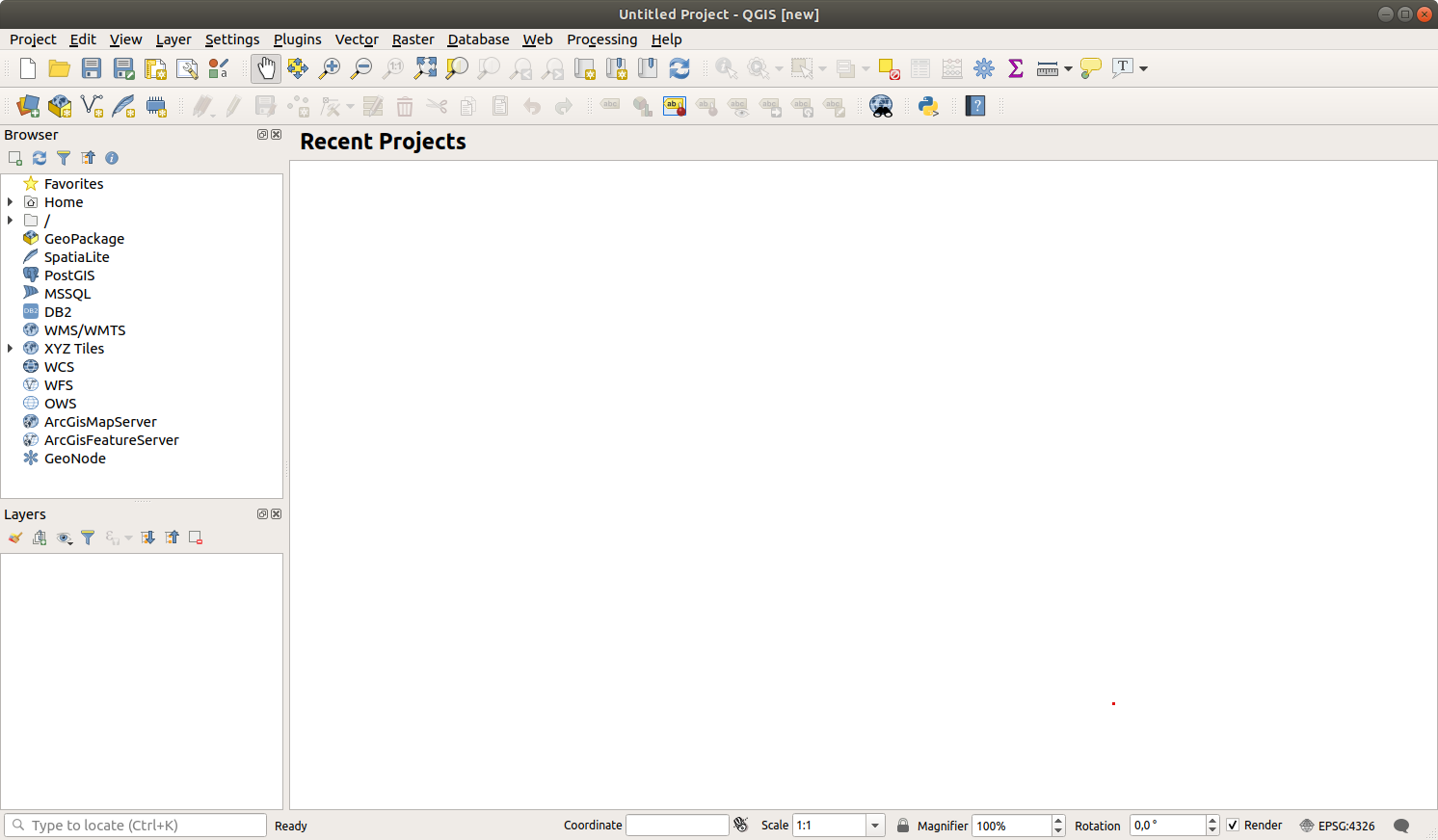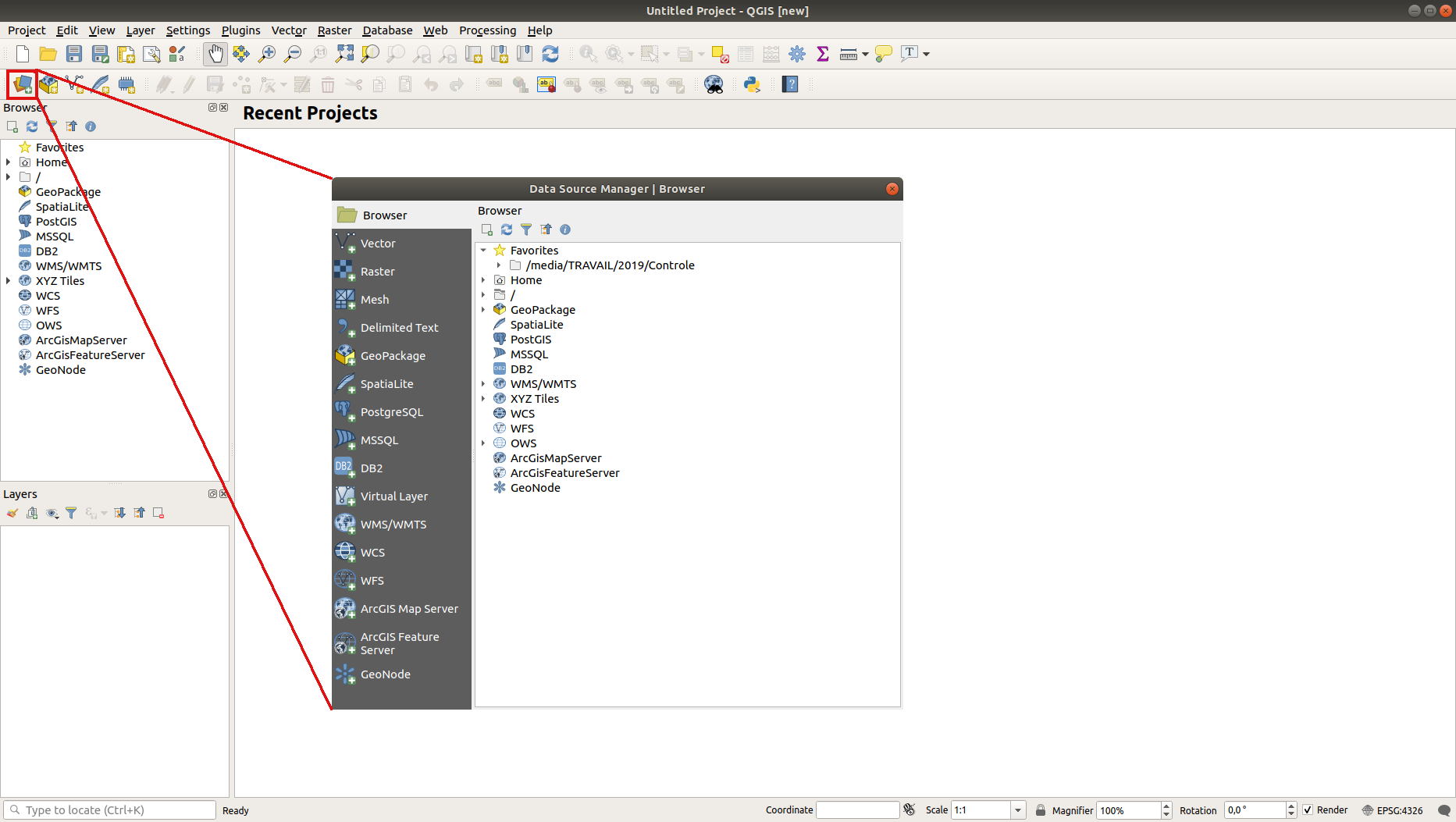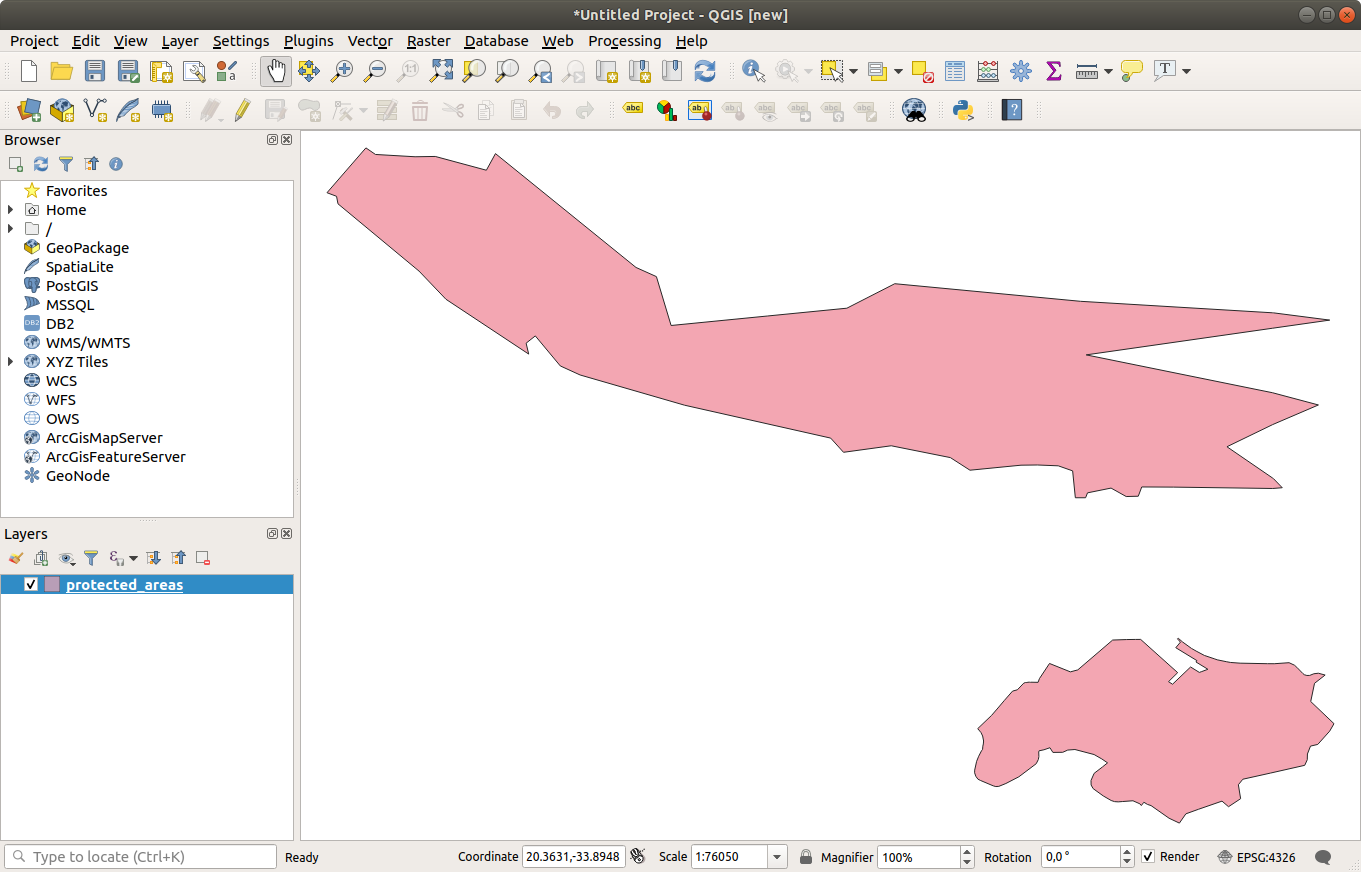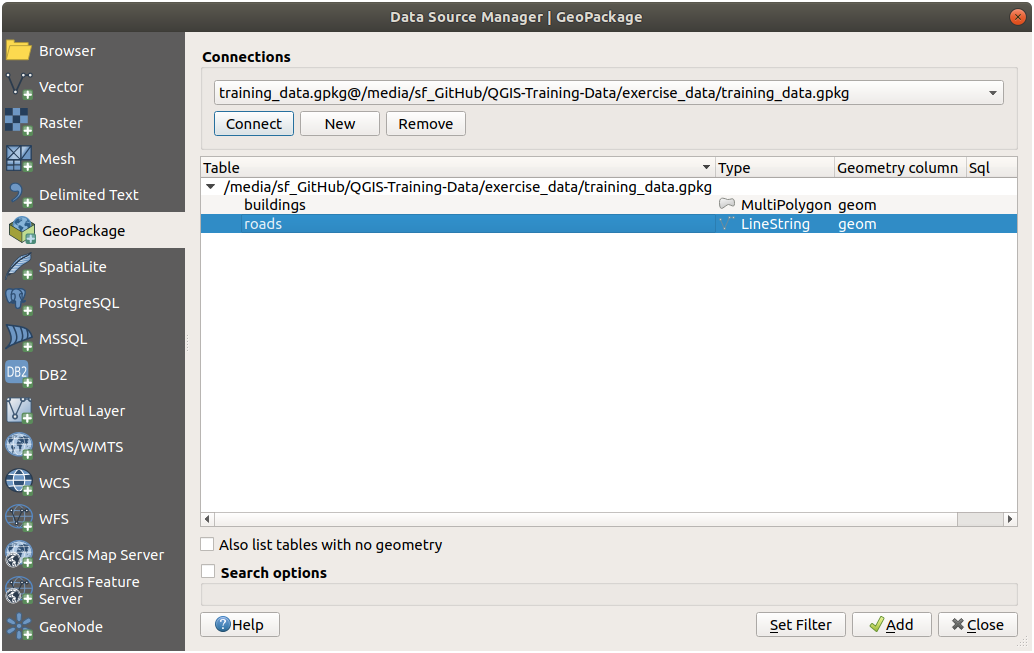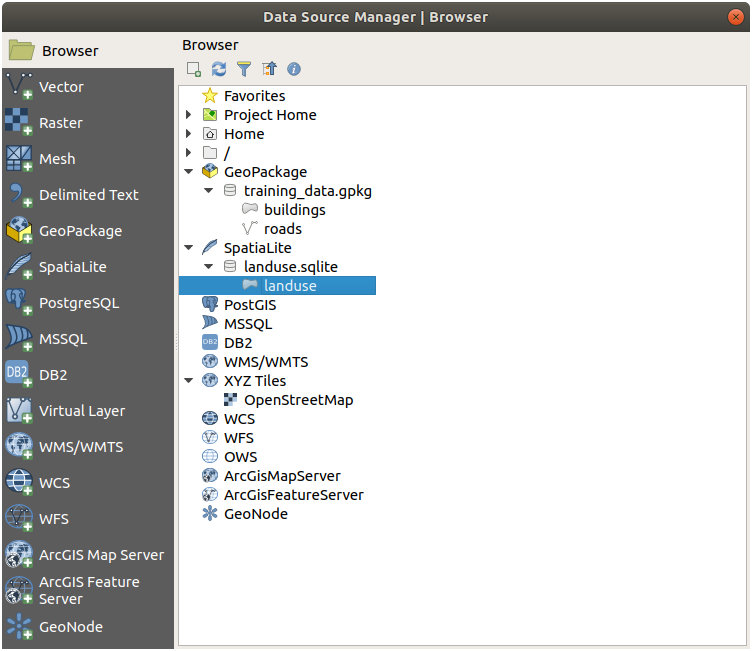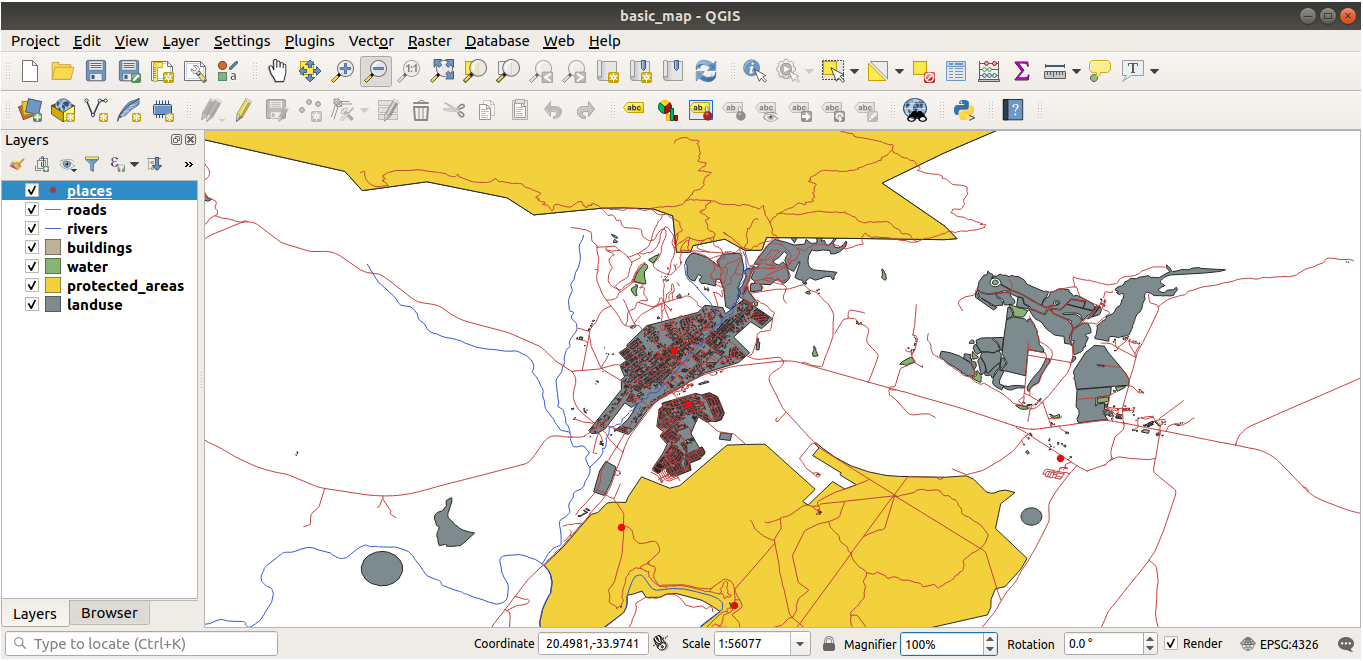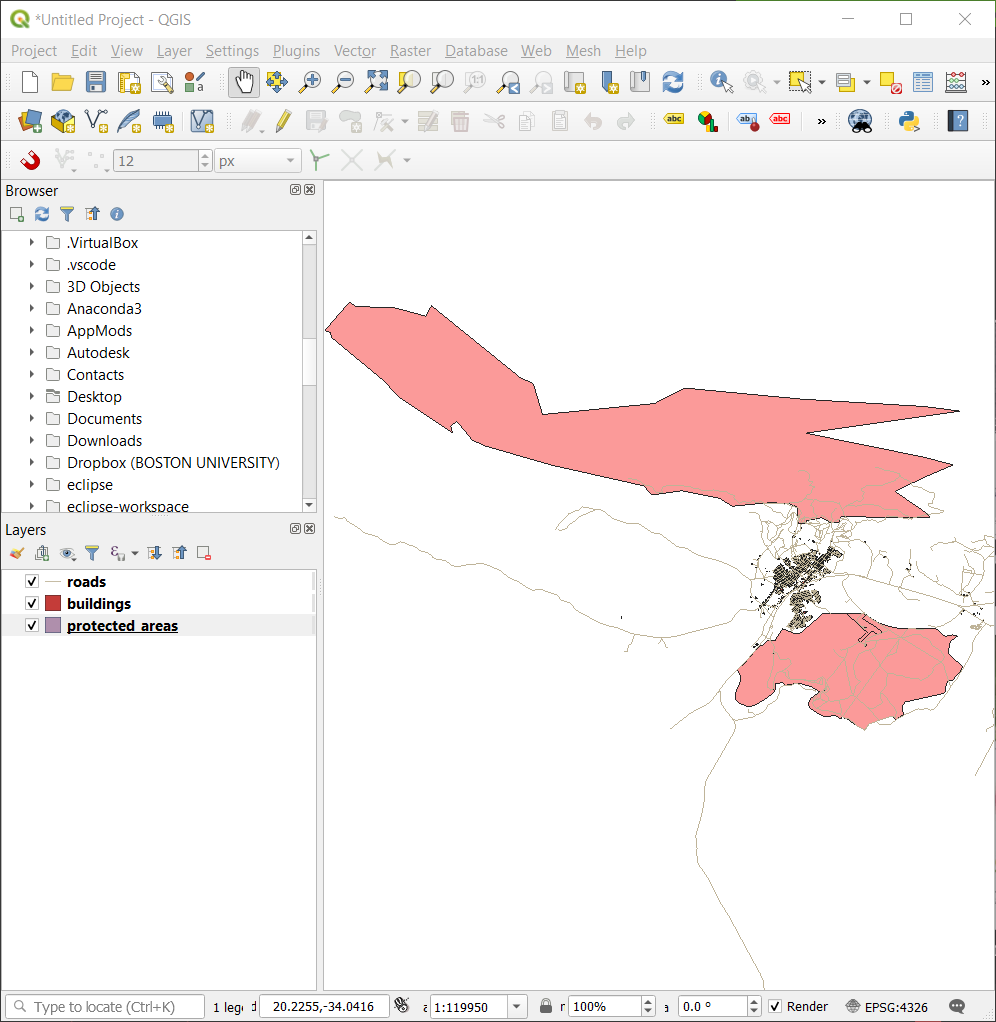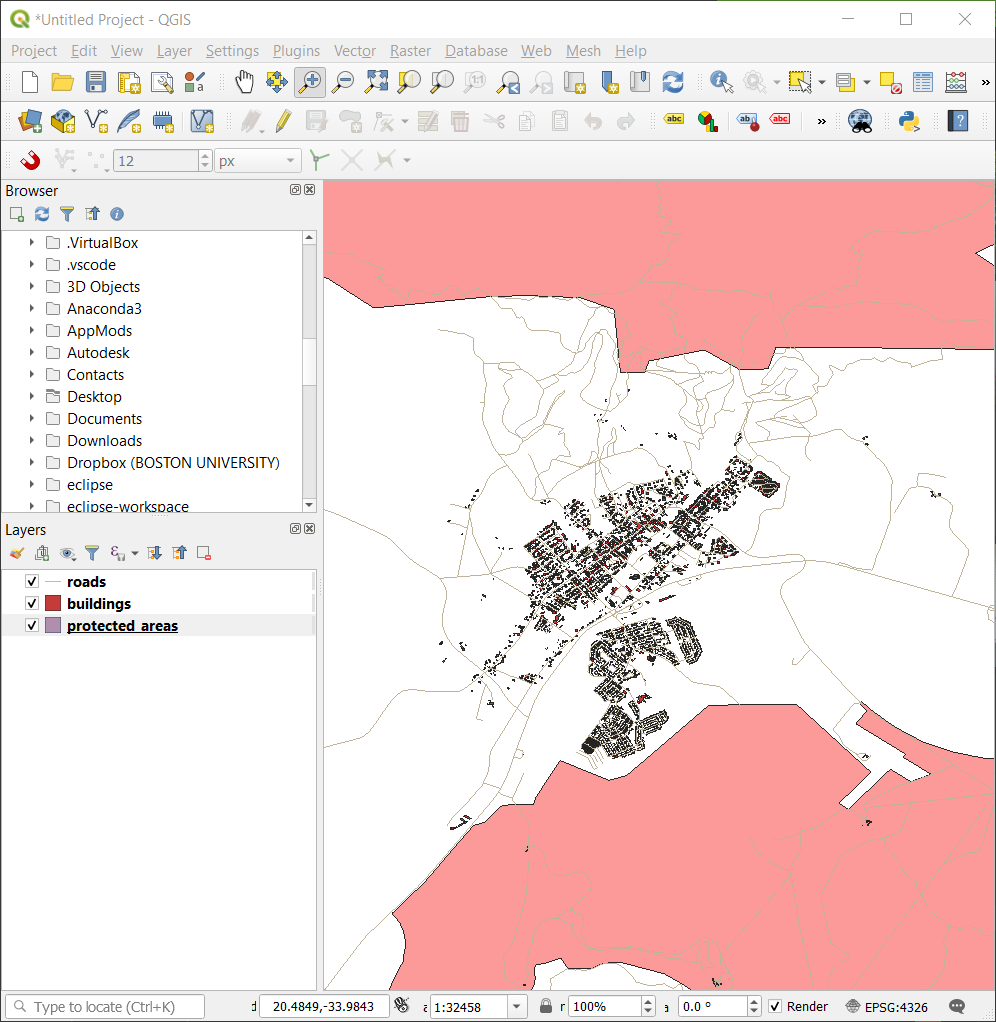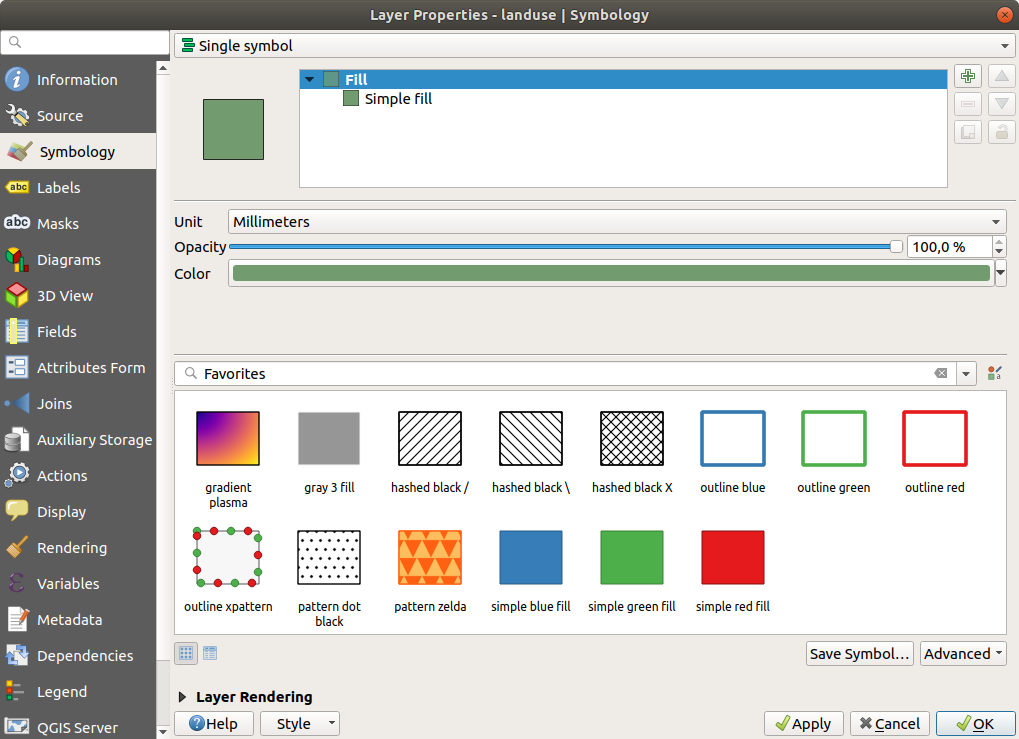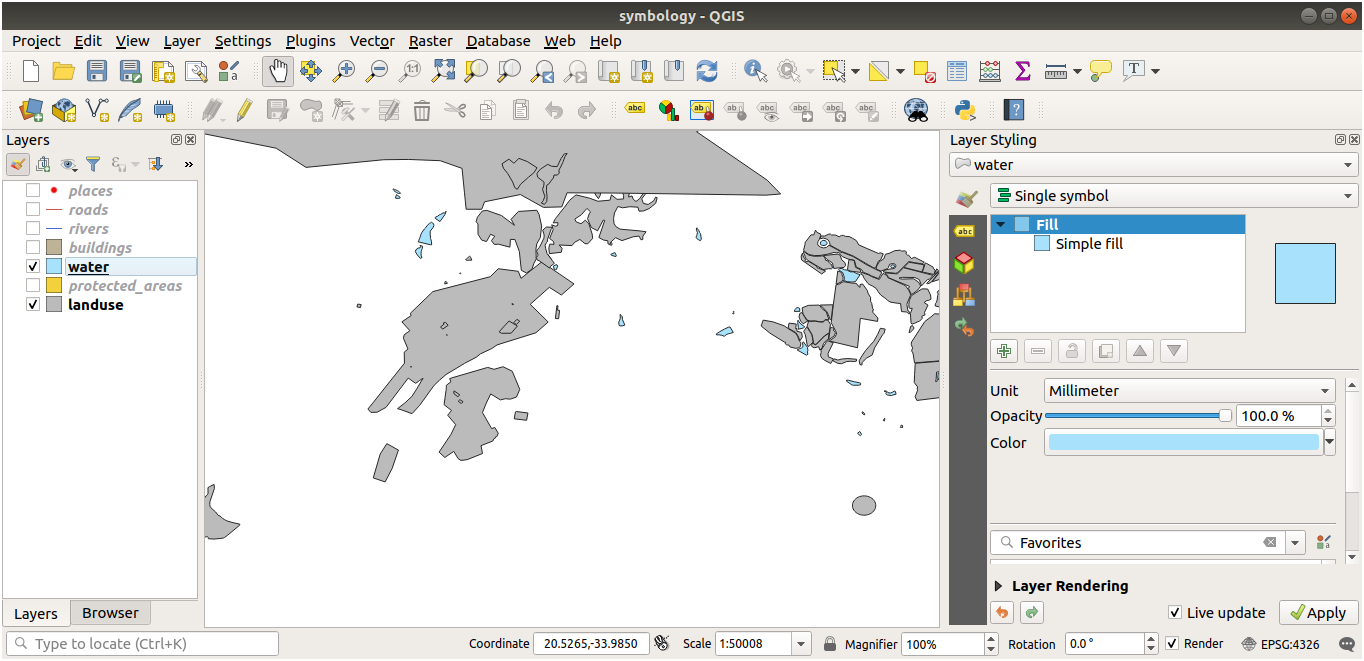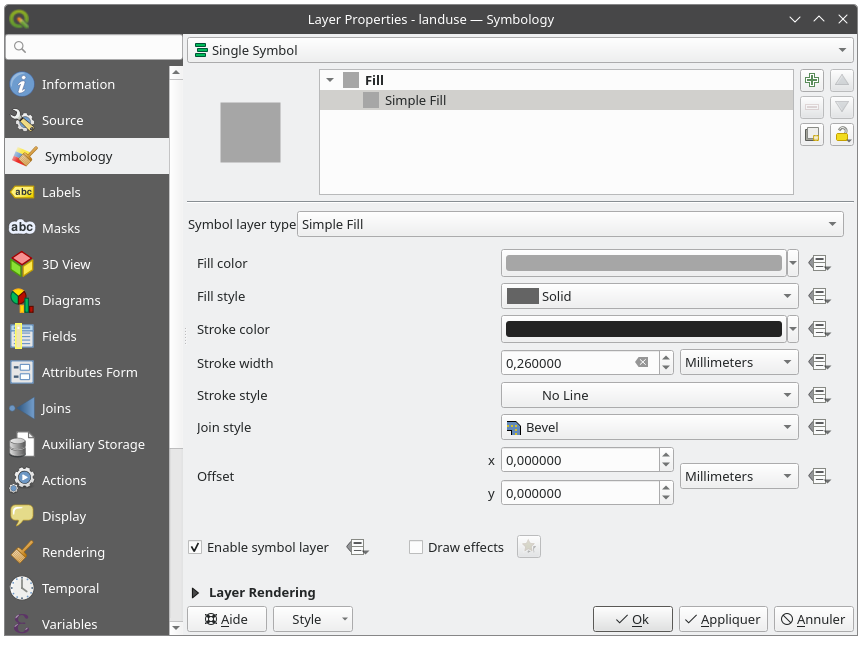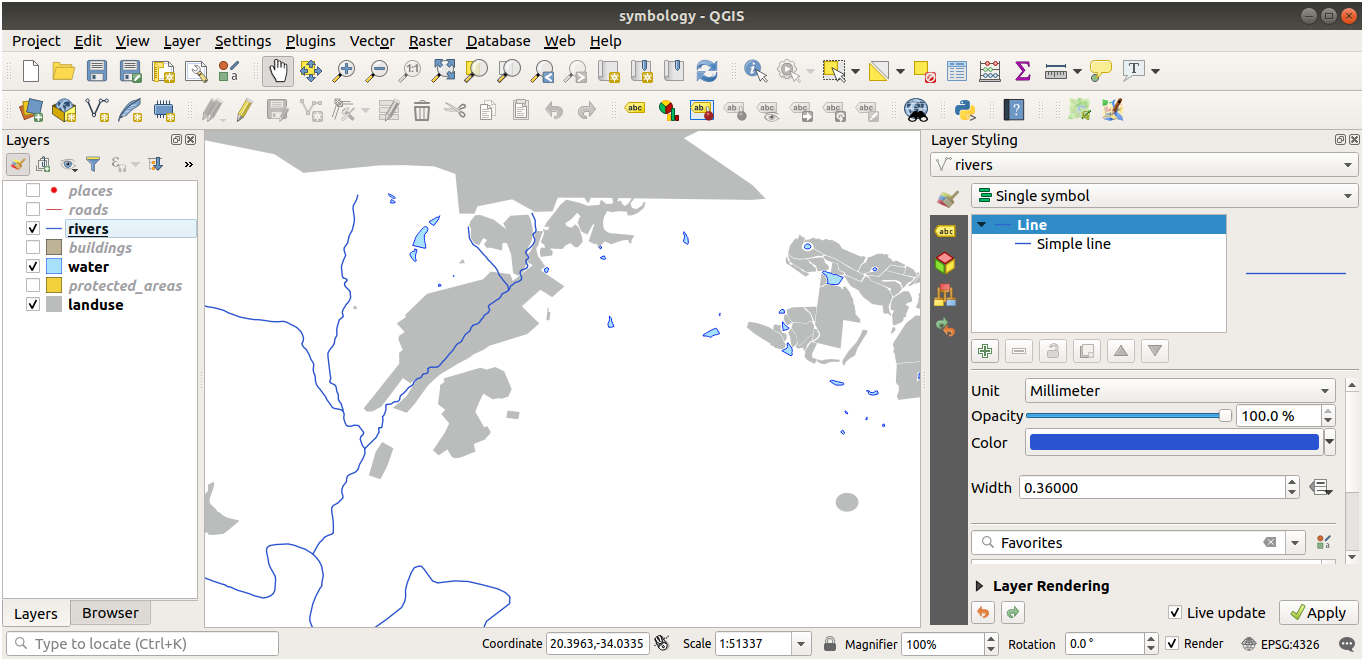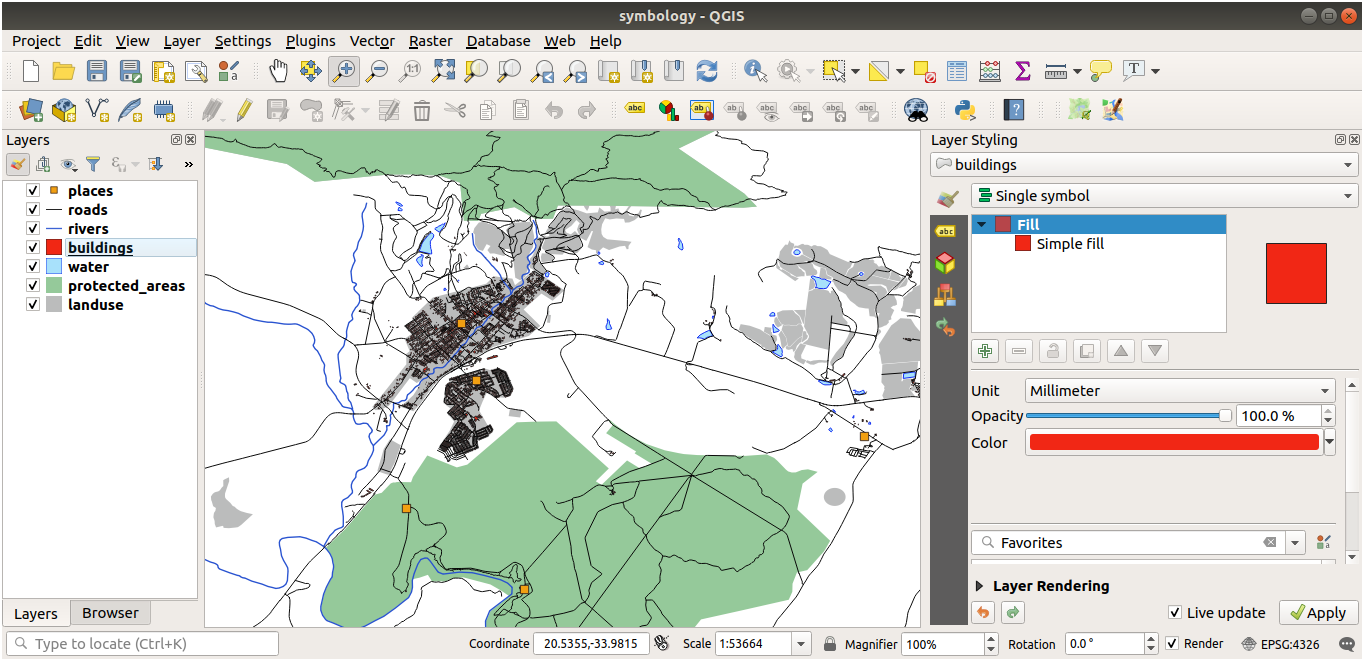QGIS "What about Learning More?"
|
• Screenshot of panel with link to article on Wikipedia |
[edit] FOREWORD"We will be showing you how to use QGIS easily and efficiently. If you are new to GIS, we will tell you what you need to get started. If you are an experienced user, you will see how QGIS fulfills all the functions you expect from a GIS program, and more!" |
[edit] INTRODUCTION
The aim of the QGIS Training Manual is:—
"...to provide all the materials needed to run a 5 day course on QGIS, PostgreSQL and PostGIS. The course is structured with content to suit novice, intermediate and advanced users alike and has many exercises complete with annotated answers throughout the text."
(ib.)
The objects of this particular article are:—
- To understand the basics of the QGIS user interface.
- To get started with an example map.
- Learn how to use Pan and Zoom tools within QGIS and learn about map scale.
- To be able to create any symbology you want for any vector layer.
It is therefore structured with content from Module 2 to suit novice users.
• Table 1: Complete list of Modules contained in the official documentation of QGIS. See Appendix for further details.
[edit] • 2. Module: Creating and Exploring a Basic Map (Beginner-level 2.1 - 2.4.4.)
[edit] • 2.1. Lesson: An Overview of the InterfaceGoal: To understand the basics of the QGIS user interface.
|
[edit] • 2.2. Lesson: Adding your first layers
Goal: To get started with an example map.
|
• 2.2.2. Try Yourself: |
• 2.2.4. Loading vector data from a SpatiaLite Database with the Browser • 2.2.5. Try Yourself: |
• 2.2.6. Reordering the layers n.b The map now makes more sense visually, with roads and buildings appearing above the land use regions. |
• Table 2.2: Outlining the main points involved in creating an example map.
[edit]
Goal: Learn how to use Pan and Zoom tools within QGIS and learn about map scale.
|
Fig. 2.8 Protected areas, roads and buildings added • 2.3.1. Basic Navigation Tools |
Fig. 2.9 Zoom in |
Fig. 2.10 Zoom out |
• Table 2.3: Outlining the main points involved in navigating the map canvas.
[edit] • 2.4. Lesson: Symbology
Goal: To be able to create any symbology you want for any vector layer.
|
• 2.4.1. Changing Colors |
• 2.4.2 Try Yourself |
• 2.4.4. Try Yourself |
• 2.4.4. (continuation) |
• Table 2.4: Outlining the main points involved in creating symbology.
[edit] CONCLUSION
The next step is to continue with Module 2.4.5. Scale-Based Visibility.
[edit] APPENDIX
The complete list of the Modules contained in the official documentation together with the goals for each lesson.
|
[edit] References
QGIS (2002-now) 'QGIS Training Manual', QGIS Project.
[edit] Further reading
Gandhi, U. (2022) 'Introduction to QGIS (Full Course Material): A Comprehensive Introduction to Mapping and Spatial Analysis with QGIS', Spatial Thoughts.
Gandhi, U. (2023) 'Web Mapping with QGIS2Web (QGIS3)', qgistutorials.com
[edit] Useful links
AMDGS (2018) 'QGIS 3 in 3 minutes', YouTube.
AMDGS (2019) 'QGIS 3: An introduction for beginners, upgraders and switchers', YouTube (see Playlist of 17 videos).
Learn & Explore (2023) 'Export Coordinates of Vertices from a Polygon Shapefile using QGIS', YouTube.
Archiblog (2024) 'QGIS - Selfried', Playlist of QGIS videos by Rebecca Selfried, YouTube.
--Archiblog 08:03, 19 May 2024 (BST)
[edit] Related articles on Designing Buildings
Geographic information system GIS
Geographic Information Systems: QGIS
Featured articles and news
A change to adoptive architecture
Effects of global weather warming on architectural detailing, material choice and human interaction.
How big is the problem and what can we do to mitigate the effects?
Overheating guidance and tools for building designers
A number of cool guides to help with the heat.
The UK's Modern Industrial Strategy: A 10 year plan
Previous consultation criticism, current key elements and general support with some persisting reservations.
Building Safety Regulator reforms
New roles, new staff and a new fast track service pave the way for a single construction regulator.
Architectural Technologist CPDs and Communications
CIAT CPD… and how you can do it!
Cooling centres and cool spaces
Managing extreme heat in cities by directing the public to places for heat stress relief and water sources.
Winter gardens: A brief history and warm variations
Extending the season with glass in different forms and terms.
Restoring Great Yarmouth's Winter Gardens
Transforming one of the least sustainable constructions imaginable.
Construction Skills Mission Board launch sector drive
Newly formed government and industry collaboration set strategy for recruiting an additional 100,000 construction workers a year.
New Architects Code comes into effect in September 2025
ARB Architects Code of Conduct and Practice available with ongoing consultation regarding guidance.
Welsh Skills Body (Medr) launches ambitious plan
The new skills body brings together funding and regulation of tertiary education and research for the devolved nation.
Paul Gandy FCIOB announced as next CIOB President
Former Tilbury Douglas CEO takes helm.
UK Infrastructure: A 10 Year Strategy. In brief with reactions
With the National Infrastructure and Service Transformation Authority (NISTA).
Ebenezer Howard: inventor of the garden city. Book review.
Airtightness Topic Guide BSRIA TG 27/2025
Explaining the basics of airtightness, what it is, why it's important, when it's required and how it's carried out.







